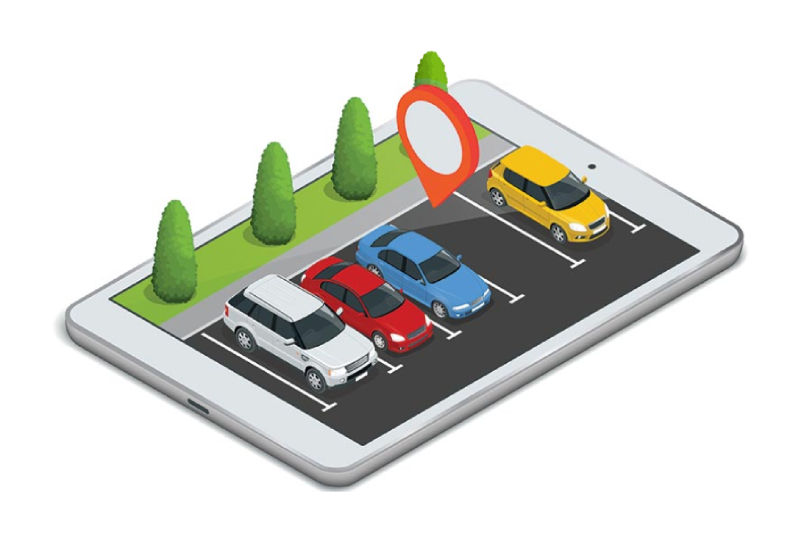
Smart parking development implies an IoT-based system that sends data about free and occupied parking places via web/mobile application. The IoT-device, including sensors and microcontrollers, is located in each parking place.
Parking Management System
Inadequacy of advantageous parking system creates difficulties for almost every motorist. Enhancement in existing parking solutions is quite difficult to apply because of its complicated nature. Most of the independent organizations, institutions maintain their personal parking facilities. Based on site requirements the framework of parking management varies. Each site requirement is unique so, what is implemented in one establishment may not work for other.
In order to offer parking management system, the facility owner need to focus on two main factors; first, they are required to identify their unique parking area requirements and second, strategies to earn the most from their parking resources. Because of the significant investment and involvement in parking management, most of the facility owners decide to expand their resources.
The methods adapted by varied organizations for planning a construction facility differ significantly. The range could be small or huge depending on numerous features like it could be as simple as posting a person outside a gated area for handling things, or it could be as diverse as managing the passing of vehicles at a vast airport. As we know nothing is unlimited on earth hence the amount of resources, including parking space is also restricted and it is depleting as well. Organizations must put an effort to acquire a diversified view of the problem of the depleting resource by selecting a proper, standard solution that would be relevant to the parking systems rather than searching for individual parking solutions.
Parking management system plays and will continue to play an important role in the revitalization of urban areas.
Parking Guidance System
Parking guidance systems are designed to facilitate the vehicles circulation within controlled parking areas, by presenting drivers with dynamic information about the occupancy of parking stalls: a car counting system. It is a very useful tool for drivers because they can easily get information about the amount and location of available parking spots within the venue, avoid driving in circles and quickly find a vacant space.
How does Parking Guidance work?
Parking Guidance Systems (PGS) combine traffic monitoring, onsite communication, processing and variable message sign (VMS) technologies to provide a comprehensive service.
The most common solutions allow drivers to find unoccupied parking spaces and to locate their car when returning to the vehicle. To do so, parking guidance systems usually employ adaptive lighting sensors, parking space indicators, and indoor positioning systems as well as “Find Your Car” function at the pay station.
Why choosing Parking Guidance?
Parking Guidance Systems improve drivers’ parking experience, guiding them in finding a vacant spot, and often in locating their car when coming back. VMS signs facilitate timely information updates and reduce the need for costly and more labor-intensive fixed message signs.
Parking Guidance system can be used not only within a single parking facility, but also on a certain area with parking access control, in order to direct drivers to car parks where occupancy levels are low. The goal is to reduce search time, which in turn decreases traffic congestion, with related benefits to air pollution.
Parking Guidance systems are also powerful tools for parking operators. Through yield management and dynamic pricing they can adjust the parking tariffs based on supply and demand, or other business criteria, such as “premium parker” programs and loyalty initiatives.
Gate Barrier System
We provide highly reliable and functional gate barrier systems for your security purposes. A boom barrier, also known as a boom gate, is a bar, or pole pivoted to allow the boom to block vehicular access through a controlled point. Typically the tip of a boom gate rises in a vertical arc to a near vertical position. Boom gates are often counterweighted, so the pole is easily tipped. Boom gates are often paired either end to end, or offset appropriately to block traffic in both directions. Some boom gates also have a second arm which hangs 300 to 400 mm below the upper arm when lowered, to increase approach visibility, and which hangs on links so it lies flat with the main boom as the barrier is raised. Some barriers also feature a pivot roughly half way, where as the barrier is raised, the outermost half remains horizontal, with the barrier resembling an upside down ‘L’ when raised.
Automatic Boom Barrier
There are various technologies for an automatic boom barrier. One of them is electro-mechanical, which is widely used due to its reliability. The other technologies are often manufacturer specific. These electro-mechanical device comes with 24VDC drive unit which can run continuously without generating heat, so electro-mechanical boom barriers can be operated continuously and in an intensive duty cycle.
An Automatic boom barrier can be operated through
- Push Button
- Remote Control
- RFID Tags / RFID Reader
- Loop Detector
- Any third party access control device

Pedestrian Gate / Turnstiles
Full height pedestrian turnstiles are used to control the access of pedestrians, they can be integrated to operate with access control system such as card readers, providing a secure way of allowing authorised users entry or exit.
Turnstiles can form part of a security fence line, preventing access to unauthorized personnel and secure the perimeter of your premises.